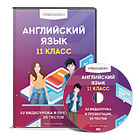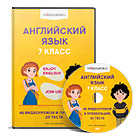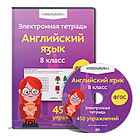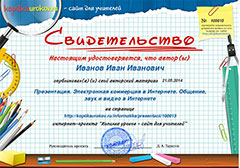| Unit | Unit 1: Hobbies and Leisure | School | #130 |
| Date | 22.09.2021 | Teacher | Муханова Гульзада |
| Class | 7 a | Present: | Absent: |
| Lesson title | Presenting a table of information and statistics about young people in Kazakhstan (This relates to Maths) |
| Learning objectives(s) that this lesson is contributing to | 7.R2 understand specific information and detail in texts on a range of familiar general and curricular topics; 7.S2 ask complex questions to get information about a limited range of general topics and some curricular topics; 7.UE12 use comparative degree of adjective structures with regular and irregular adjectives on a range of familiar general and curricular topics |
| Levels of thinking skills | HOTS |
| Lesson objectives | All learners will be able to: |
| separate the specific information about hobbies; explain the formation of degrees of adjectives |
| Most learners will be able to: |
| ask and answer the questions about hobbies; choose the correct degrees of adjectives |
| Some learners will be able to: |
| compare the details given in the text; prove usage of degrees of adjectives |
| Assessment criteria | identify the key information about hobbies discuss the text, ask and share opinions with other groups form and compare the degrees of adjectives explain the main details of the topic with some support create a table of information about hobbies |
| Language objectives | specific topical vocabulary |
| Values links | to spend and organize free time effectively to take care about healthy way of life |
| Cross-curricular links | Maths (common and decimal fractions ) Geography (regions and cities) |
| Previous learning: | |
| Plan |
| Planned timings | Planned activities (replace the notes below with your planned activities) | Resources |
| Beginning | 4 mins | Organization moment Greeting with students. A brief talk with students. T: Q1. What does your friend do for fun in his/her free time? Q2. Why do you think so? Q3. What useful sides of your hobby can you say? Increasing students` psychological motivation. T: Stand in a circle. The first student says the phrase «I believe you can….. » to the second student and the second student says, «Yes, I can» and this continues in the chain circle. S1: I believe you can do the best in this lesson. S2: Yes, I can! I believe you can answer all the teacher`s questions. | Questions |
| 6 mins | Dividing into groups «Picture sort» T: Look at the pictures and say about them. S1: I can see the pictures of hobbies. S2: They are types of hobbies. T: Take and name the hobby in the picture and divide them into two groups: winter and summer time hobbies. Warm up «Catch the Ball» T: I give you the soft foam ball. The first person takes the ball and must tell short information about his/her hobby and throw the ball to the second person. The second person does the same and throws it on to the next person. F. ex: S1: My hobby is playing chess. Because it will help me to think widely and solve the problems easily. Identifying the objectives T: Do you have any ideas about today`s objectives. S1: Objectives are connected with hobbies. S2: Types of hobbies. Students are introduced with the objectives and learning outcomes. | Pictures of hobbies
Ball
|
|
Middle | 10 mins | New lesson. (I, P, G) Brainstorming Think, Pair, Share T: Skim the text about hobby statistics and identify the key information. Choose the main details and compare them with the partner. Then express the opinions in the group and discuss them. Groups share the conclusion with the other groups. T: Answer the questions. What information can you find? How do you identify them? What facts do surprise you and your partner? What contrast ideas do you name? | Text Questions Board |
| 8 mins | (I, G) The Group of Stickers T: Read the text and find out the information about hobbies. Then write them on stickers. Each group separates the ideas into three categories. And stick them on the board. You chart the table of hobbies providing the detailed information in a group. Describe the statistic information about hobbies among Kazakhstani young people. The groups explain the ideas. A students – name types of hobbies B students – reasons of choosing hobbies C students – detailed information | Text
|
| 5 mins | (I) Fill in the gaps T: Fill in the gaps with degrees of comparison of adjectives. The first task is a test; students choose the right degree of adjectives from the given answers. In the second task, students should form the right degree from the adjectives in brackets on their own. In the third task there are no given adjectives; students should find the suitable adjectives by themselves. A students – choose the right degree B students – form the necessary degree of adjectives C students – put the suitable adjectives | three types of worksheets |
| End | 4 min | Concluding the lesson «60 seconds» Choose a few students and give each 60 seconds to summarize important concepts that they have covered during the lesson. |
|
| 2 mins | Assessment Giving smile stickers at the every stages of the lesson. Self-assessment chart. | Smile stickers Charts |
| 3 mins | Giving the home task. Students collect information about their family`s hobbies and make a report. | Student`s book |
| 3 mins | Feedback Plus/Minus/Delta (+/-/∆) | Slips of paper |
| Descriptors | A leaner finds out the necessary information and speak about it. answers the questions. expresses own opinions. chooses the suitable adjectives. forms the degrees of adjectives correctly. |
|
| Additional information |
| Differentiation – how do you plan to give more support? How do you plan to challenge the more able learners? | Assessment – how are you planning to check learners’ learning? | Health and safety check
|
| More support Explain the definitions of some hobbies Some questions and tasks are difficult for less able students: wait time reformulate the questions giving clues for tasks support of more able students More-able students | Self-assessment chart Stickers | to lead a healthy way of life
|















